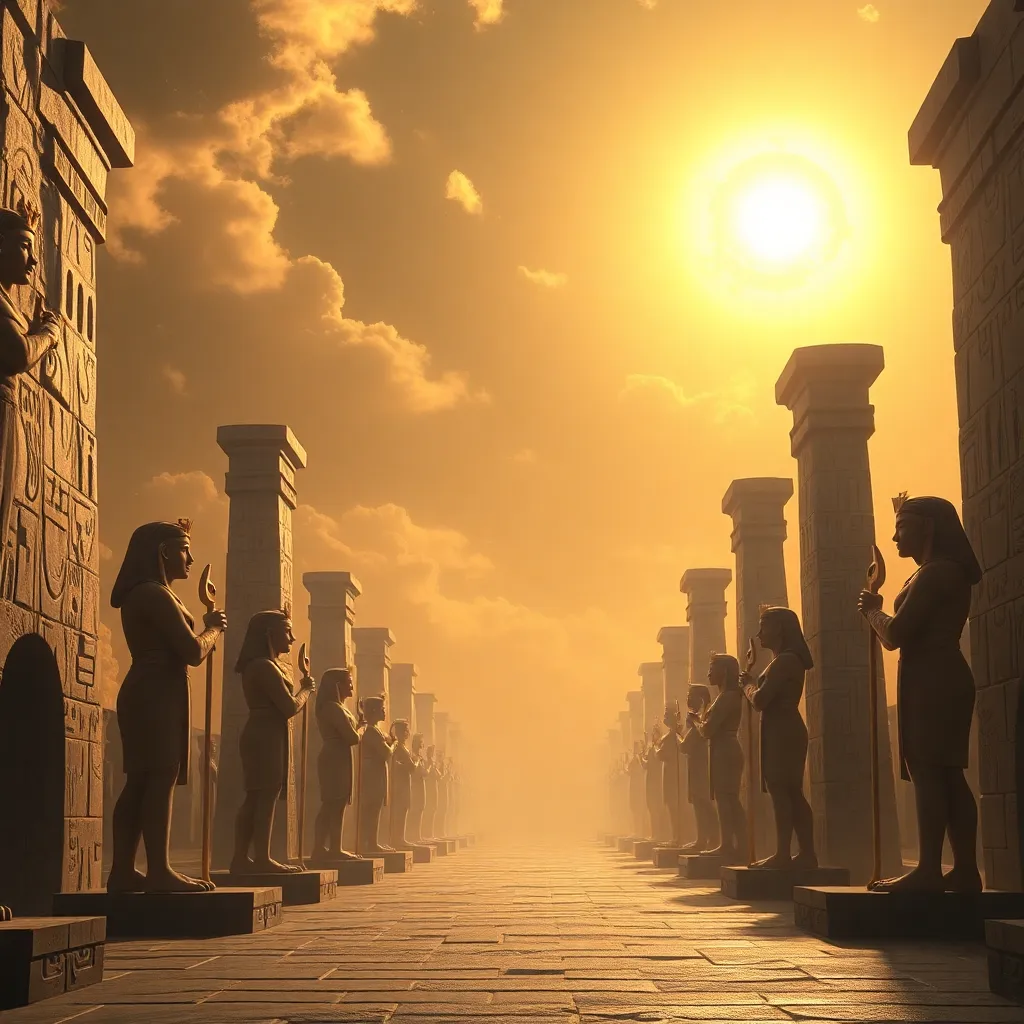The Quest for Immortality: A Story of the Afterlife
Introduction: The Allure of Immortality
Immortality, the idea of living forever, has captivated human imagination across cultures and eras. It signifies more than just the absence of death; it represents the ultimate achievement of life, a state where one transcends the limitations of mortality. Throughout history, humanity has sought to understand and attain eternal life, leading to a diverse array of beliefs and practices centered around the afterlife.
The quest for immortality is often intertwined with the human desire to find meaning in existence. As people grapple with the inevitability of death, they turn to various narratives and symbols that promise continuity beyond the physical realm. This exploration of the afterlife serves as both a comfort and a source of fascination, prompting countless stories and philosophies about what lies beyond our mortal existence.
Historical Perspectives on Immortality
Ancient civilizations have long held beliefs about life after death, shaping their cultures and societies. Some notable perspectives include:
- Egyptians: The ancient Egyptians believed in a complex afterlife where the heart of the deceased was weighed against the feather of Ma’at, the goddess of truth. Those who passed this test entered the Field of Reeds, a paradise.
- Greeks: Greek philosophers, such as Plato, proposed that the soul is immortal and undergoes a cycle of rebirth, while others, like Aristotle, questioned the permanence of the soul after death.
- Chinese: In ancient China, the belief in an afterlife was closely linked to the concept of ancestor worship, where the spirits of the deceased continued to influence the living.
Philosophically, the question of immortality has been debated extensively. Major religions also provide unique interpretations:
- Christianity teaches of Heaven and Hell, where souls are judged and sent to eternal realms based on their earthly lives.
- Buddhism offers the concept of reincarnation, where the soul is reborn in a new form based on karma.
- In Hinduism, the cycle of birth, death, and rebirth (samsara) continues until one achieves moksha, or liberation.
Mythology and Folklore: Tales of Eternal Life
Myths and legends play a crucial role in humanity’s understanding of immortality and the afterlife. These stories often serve as metaphors for the human experience and depict the struggle against death. Some notable figures and tales include:
- Gilgamesh: The epic of Gilgamesh illustrates a king’s quest for immortality after the death of his friend Enkidu. Despite his efforts, he learns that eternal life is unattainable for mortals.
- The Fountain of Youth: This legendary spring supposedly restores youth and vitality to those who drink from it, symbolizing humanity’s desire to escape the aging process.
Folklore surrounding immortality often reflects societal views on death, providing comfort or cautionary tales about the nature of existence and the consequences of seeking eternal life.
Scientific Pursuits: Modern Approaches to Immortality
In contemporary society, the quest for immortality has taken on a new dimension through advancements in biotechnology and medicine. Researchers are exploring various avenues in the pursuit of longevity:
- Telomeres: Studies on telomeres, the protective caps on the ends of chromosomes, have revealed their role in aging and cellular replication, leading to potential interventions that could extend life.
- Genetic Modifications: CRISPR and other genetic editing technologies are being investigated for their ability to alter genes associated with aging and disease.
However, these pursuits raise ethical questions about the implications of physical immortality. Would extended life lead to a more fulfilling existence, or would it complicate societal structures and personal relationships?
Spiritual Dimensions: The Afterlife Across Cultures
Across cultures, beliefs about the afterlife vary widely, offering unique perspectives on what happens after death. Some notable beliefs include:
- Heaven and Hell: In Abrahamic religions, the afterlife is often viewed as a place of reward or punishment based on one’s earthly actions.
- Reincarnation: Hinduism and Buddhism teach that the soul is reborn in different forms, influenced by karma accumulated in past lives.
- Nirvana: In Buddhism, achieving Nirvana represents liberation from the cycle of rebirth and the cessation of suffering.
Rituals and practices are essential in preparing for the afterlife, with many cultures conducting elaborate ceremonies to honor the dead. Personal testimonies and near-death experiences provide insight into individual beliefs and the potential for life beyond death.
Philosophical Dilemmas: The Meaning of Life and Death
The quest for immortality raises profound philosophical questions about existence and the human condition. Some key dilemmas include:
- What does it mean to live a meaningful life if one could live forever?
- How would the prospect of eternal life impact human behavior and societal structures?
- Could immortality be more of a curse than a blessing, leading to existential ennui?
These questions challenge our understanding of life, death, and the value we assign to each moment of existence.
The Future of Immortality: Technological and Spiritual Integration
As technology advances, the future of immortality may blend scientific and spiritual perspectives. Innovations on the horizon include:
- AI Consciousness: The potential for artificial intelligence to replicate human consciousness raises questions about identity and the essence of being.
- Mind Uploading: This speculative technology could allow individuals to transfer their consciousness to a digital medium, effectively achieving a form of immortality.
This convergence of scientific and spiritual understandings could lead to new approaches to life and death, redefining what it means to be human in the process.
Conclusion: The Ongoing Journey Toward Understanding Immortality
The quest for immortality is a multifaceted journey that encompasses historical, philosophical, scientific, and spiritual dimensions. As we navigate these complex themes, it is essential to continue the dialogue on life, death, and the afterlife. Understanding mortality can enrich our existence, prompting us to live with purpose and intention.
Ultimately, the meaning of immortality varies for each individual and society, shaping how we approach the inevitable cycle of life and death. As humanity progresses, the quest for eternal life may evolve, but the fundamental questions about existence and legacy will persist.




